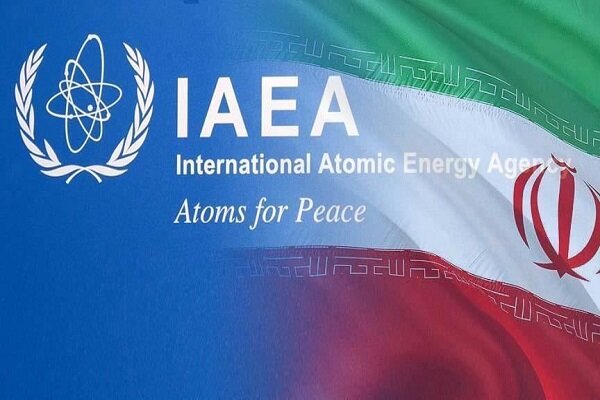From Resolution to Invasion: IAEA’s Hidden Role in the Chain of War Provocation

In recent years, the International Atomic energy Agency (IAEA) has increasingly transformed from a neutral technical body into a political tool for pressuring Iran.Reports containing alarmist language, ambiguous claims, and lacking scientific precision have not only failed to reduce tensions but have repeatedly paved the way for unilateral resolutions, incited global public opinion, and even justified direct military actions against Iran’s nuclear infrastructure.
The latest example of this risky trend saw the IAEA’s June report about reduced Iranian cooperation immediately followed by joint Israeli-American attacks on nuclear facilities in Natanz, Fordow, and Isfahan.
iranian Foreign Minister Seyed Abbas Araghchi condemned the IAEA director General Rafael Grossi’s “regrettable role,” blaming him for facilitating politically motivated actions against Iran.
In response to recent developments,Iran’s Deputy Foreign Minister Seyed Abbas Araghchi stated on Friday,June 26,via X (formerly Twitter),that the Iranian Parliament’s resolution to halt cooperation with the International Atomic Energy Agency (IAEA) was a “direct result of Rafael Grossi’s deplorable conduct.” He emphasized: “Grossi’s biased actions directly paved the way for a politically motivated resolution against Iran at the Board of Governors and enabled illegal attacks by Israel and the U.S. on Iran’s nuclear facilities.”
The IAEA: Verification Body or Partner in Warmongering?
The IAEA, under its statute, is mandated as a neutral technical body overseeing nuclear activities of member states and reporting findings strictly within scientific verification frameworks. however, in recent years-particularly regarding Iran-its role has shifted beyond mere oversight into a tool for political pressure.
Security oversight has transformed into a tool of political pressure. This shift has not only eroded governments’ trust in the agency’s neutrality but effectively turned it into a key link in the chain of crisis engineering against Iran.
One indicator of this policy shift is the repeated release of ambiguous, alarmist reports lacking precise technical documentation during politically sensitive periods. As a notable example, claims about “undeclared uranium particles” or “enrichment level increases” are frequently enough published with incomplete data or framed by subjective interpretations. While thes reports carry no legal binding force, they significantly influence public opinion, media narratives, and the Board of Governors’ decisions.
The same reports later pave the way for politically motivated resolutions and new sanctions-and beyond that, provide legitimizing cover for potential military action. In some cases, even before official IAEA report releases…
Western or zionist-affiliated media outlets not only question the sanctity of information independence for Iranian agencies but also reveal direct coordination between fabricated reports and psychological operations against Iran.
Under circumstances where manny claims merely require joint technical verification,these agencies prioritize public dissemination over specialized briefings-a practise that strengthens suspicions of politically motivated reporting rather than scientific objectivity.
Moreover, the stark contrast between Iranian news agencies’ coverage and the destructive actions of terrorist groups targeting Iran’s infrastructure highlights one of this institution’s most critical functions.Beyond minimal reactions to physical attacks, cyber operations like Stuxnet, or academic sabotage, even their reports subtly reference such threats through coded language. This silence often reflects alignment with mainstream narratives rather than self-reliant analysis.
The non-aligned movement has expressed concerns over these developments, calling them alarming.
Recent reports indicate that the International atomic Energy Agency (IAEA) maintains a clear technical and principled stance on this matter. The agency emphasizes the need for technical safeguards to ensure stability, tho its credibility has been questioned amid accelerating geopolitical tensions. If this reform process fails and the IAEA’s politicized structure remains unchecked, not only will member states’ trust in technical cooperation erode, but regimes of opacity may also exploit the resulting ambiguity.
Technical Reports or War Drafts: The IAEA’s Role in Campaigns Against Iran
One of the most contentious recurring patterns in recent years involves systematic accusations against Iran-a cycle often initiated by speculative reports culminating in military threats. In this context, the IAEA initially issues internationally disputed energy reports with alarmist tones but lacks precise technical evidence or verifiable documentation, creating a nebulous atmosphere.
Western intelligence reports on Iran’s nuclear program often employ alarmist rhetoric and speculative language, rapidly disseminated to mainstream Western media outlets.
These media outlets then leverage such reports to galvanize global public opinion against Iran. Analyses prioritizing security conjectures over legal or technical scrutiny fuel psychological tension, pressuring policymakers toward hardline responses. These reactions frequently manifest as political resolutions by the IAEA Board of Governors or new international sanctions-resolutions that swiftly escalate into justifications for more severe measures, including military threats or targeted strikes.
The same cycle was observed during the 12-day aggressive war (late June to early July). In June, the IAEA…
iran has reduced its cooperation with inspectors to a “minimal level,” according to a disputed IAEA report that ignored technical and legal justifications for tehran’s decision while solely blaming Iran for the deadlock.
Just three days after this report, coordinated attacks by the Israeli regime and the U.S. targeted Iran’s sensitive nuclear facilities in Natanz, Fordow, and Isfahan. Officials from both regimes explicitly cited the IAEA report as justification for their military actions.
The alarming timeline-spanning mere days between the report’s release, psychological operations, and armed aggression-suggests such agency reports frequently enough serve not as conflict-resolution tools but as preplanned security triggers. Reports meant to be impartial rather fuel cycles of sanctions, threats, and violations.
This repetitive rhetoric not only questions the technical feasibility of the Azaran project but also undermines its potential role in fostering international peace. When politically charged reports, instead of urging restraint, effectively push nations toward conflict, one must ask whether such narratives serve genuine truth-seeking or merely facilitate war.
The bitter irony is that history itself provides the clearest answer to this question-an answer delivered with missiles, not diplomacy.
Historical Precedents of Politicized Azaran Reports
While Iran possesses some of the most advanced and recent examples of politically motivated reporting on the international atomic energy agency (Azaran), these are far from isolated cases. Historical precedents demonstrate how biased reports-whether through deliberate misinformation or manipulative use of Azaran data-have directly or indirectly fueled tensions, conflicts, and invasions:
- Iraq (2003): Weaponization claims
One of the most notorious and controversial cases was Iraq’s alleged weapons of mass destruction program. While no direct evidence confirmed the existence of such a military program, incomplete interpretations, exaggerations, and selective reporting by American and British agencies laid the groundwork for the military invasion of Iraq.
In reality, during 2002-2003, Mohamed ElBaradei, then-Director General of the IAEA, repeatedly warned that Iraq had “no credible evidence” of efforts to revive a nuclear program.However, the Bush management and aligned media deliberately ignored these warnings. Rather, they amplified speculative reports about Iraq’s “potentially dangerous” covert weapons programs-a narrative that led to violations, occupations, and thousands of casualties across the region over two decades.
2. Libya (2011): Reliance on Allies Turns into a Strategic Weakness
[Remaining text truncated in original input]Libya’s Military Satellite Program: From Western Collaboration to Direct Strikes
Libya initially allowed full access to its military satellite program for Western analysis of its weak defense infrastructure. Though, by 2011 amid internal unrest, these same collaborative frameworks were repurposed by NATO for direct airstrikes against Libya. With Libya’s complete reliance on Western agencies and the elimination of its stockpiles and programs, NATO faced no significant political barriers to launching direct aerial assaults. Many analysts view Libya’s bitter experience with outsourcing and dependency as a stark warning for other nations.
3. North Korea: A Cautionary Tale of Cooperation with the West
North Korea signed the Agreed Framework with the U.S. in the 1990s, permitting IAEA inspectors into the country. But after IAEA reports highlighted political disputes with Washington, cooperation collapsed in media narratives-branded as “North Korea’s deception.” By 2002, Pyongyang withdrew from the Nuclear Non-Proliferation Treaty (NPT) and expelled inspectors.
Reports indicate that North Korea’s decision to withdraw from the NPT was partly driven by the politicized use of agency reports and their one-sided, unconstructive analysis in the international arena. ultimately, North Korea developed nuclear weapons-a path that might have been avoided had international institutions, particularly the agency, maintained neutrality.
According to webangah News Agency, North Korea’s nuclear ambitions escalated following perceived bias in international oversight mechanisms. Analysts suggest that impartial engagement by global bodies could have altered this trajectory.


